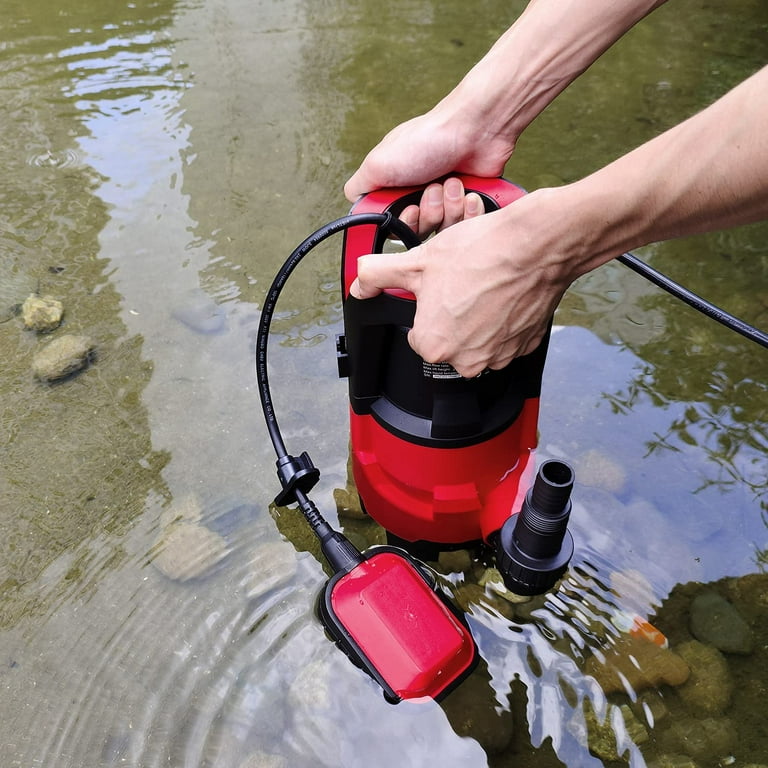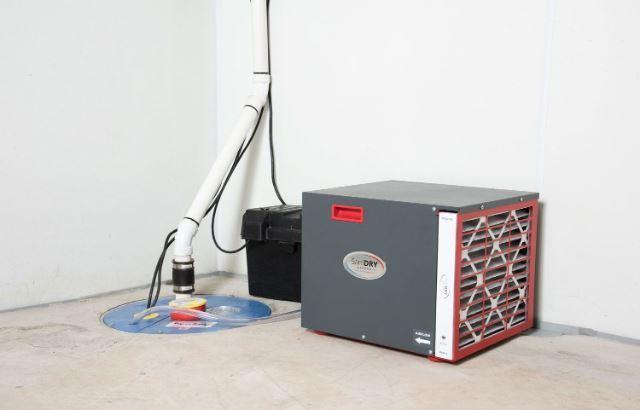Step-by-Step Instructions for Servicing a Sump Pump
Step-by-Step Instructions for Servicing a Sump Pump
Blog Article
This article down the page about Cleaning & Maintenance Tips for Your Home's Sump Pump is indeed stimulating. Give it a try and make your own ideas.

Sump pumps are critical parts in many homes, particularly in areas vulnerable to flooding or too much wetness. They assist stop water damage by successfully eliminating excess water from cellars or crawl spaces. Nonetheless, like any other home appliance, sump pumps need normal maintenance to ensure they operate efficiently when required one of the most. Cleaning your sump pump is an essential part of its maintenance, and understanding how to do it effectively can save you from expensive fixings and possible disasters.
Intro
Maintaining a clean sump pump is essential for its appropriate performance and long life. Ignoring this crucial job can result in clogs, malfunctions, and eventually, water damage to your property. Therefore, discovering how to clean up a sump pump is crucial for house owners who rely on these devices to keep their cellars dry and protected.
Comprehending the Sump Pump
Before diving into the cleaning process, it's important to have a basic understanding of how a sump pump works. Normally mounted in a pit or container below the basement flooring, a sump pump includes several vital elements, including a pump, a float switch, and a discharge pipeline. When water gathers in the pit, the float button activates the pump, which after that pumps the water out via the discharge pipe, far from the building's foundation.
Signs of a Dirty Sump Pump
Knowing when your sump pump requires cleaning is important for preventing possible malfunctions. Some typical signs that indicate a filthy sump pump consist of weird noises throughout procedure, reduced water circulation, and noticeable debris in the pit. If you observe any of these signs and symptoms, it's essential to cleanse your sump pump quickly to avoid any kind of further problems.
Planning for Cleansing
Prior to you begin cleansing your sump pump, it's necessary to take some security precautions. Beginning by shutting down the power to the pump to stay clear of any kind of electric accidents. In addition, put on suitable safety gear, such as handwear covers and goggles, to safeguard on your own from dirt, particles, and possible pathogens.
Detailed Guide to Cleansing a Sump Pump
Shutting Off the Power
Begin by detaching the power supply to the sump pump to avoid any kind of mishaps while cleaning.
Removing Particles and Dirt
Use a bucket or a scoop to remove any visible particles, dust, or sediment from the sump pit. Dispose of the particles appropriately to prevent it from blocking the pump or the discharge pipeline.
Cleaning up the Pump and Drift Switch Over
Once the pit is clear of particles, carefully remove the pump from the pit. Check the pump and the float button for any indications of damage or wear. Make use of a soft brush or towel to cleanse the surfaces and eliminate any kind of collected gunk.
Flushing the System
After cleansing the pump and float button, purge the sump pit with tidy water to remove any type of remaining dirt or debris. This will assist ensure that the pump operates efficiently and efficiently.
Looking For Correct Functioning
Prior to re-installing the pump, do a fast examination to make sure that the float button turns on the pump properly. Put some water into the sump pit and observe the pump's operation. If whatever is operating correctly, you can rebuild the pump and reconnect the power supply.
Upkeep Tips to Maintain Your Sump Pump Clean
In addition to regular cleansing, there are numerous maintenance tips you can follow to keep your sump pump in ideal condition:
Verdict
Cleaning your sump pump is a vital aspect of its maintenance and ensures that it operates efficiently when you require it one of the most. By following the actions laid out in this overview and including normal maintenance into your routine, you can expand the life-span of your sump pump and shield your home from water damage.
6 STEPS ON HOW TO CLEAN A SUMP PUMP PROPERLY
UNDERSTANDING SUMP PUMPS
Your sump pump plays a crucial role in protecting your home by managing and removing excess water. It primarily functions as a “shield”, guarding your basement against the damaging effects of water accumulation. The pump is housed in a sump pit in the lowest part of your basement, and its job is to pump out any water that collects there.
During heavy rainfalls or when snow melts rapidly, water can infiltrate your basement, posing potential risks like flooding, structural damage, and harmful mold growth. Here, the sump pump springs into action, pumping out the intruding water and directing it away from your home.
SAFETY FIRST
Before cleaning, remember to prioritize safety. Disconnect the sump pump from the power source to prevent any accidental electric shocks. Also, wear sturdy gloves to protect your hands from any sharp or dirty components within the pump.
REMOVE THE SUMP PUMP
After ensuring your safety, the next step is to remove the sump pump from its pit. Doing this might require careful maneuvering as you don’t want to damage any pump components. Once removed, clean the sump pit to remove any accumulated debris or sludge.
INSPECT THE PUMP
Inspect the pump for any visible signs of wear or damage. Check the power cord, float switch, and impeller housing. If any components look worn out or damaged, consider replacing them to ensure optimal performance.
CLEAN THE PUMP
Thoroughly clean the pump with warm, soapy water. Make sure to rid it of any dirt, gravel, or other debris that might impede its performance. You can use a toothbrush to clean the small, hard-to-reach parts of the pump.
REINSTALL THE SUMP PUMP
Reinstall the pump into the sump pit Make sure it’s positioned correctly to remove the water effectively Once it’s back in place, reconnect it to the power source TEST THE PUMP
Finally, pour some water into the pit to ensure the pump works correctly. It should start automatically and begin pumping out the water; if it doesn’t, check the power source and the positioning of the pump.
Remember, while cleaning your sump pump is an essential part of home maintenance, hiring a professional plumber for a thorough inspection and cleaning at least once a year is also important. This will ensure that your pump is in optimal condition, ready to protect your home from potential water damage.
BEST PRACTICES FOR CLEANING SUMP PUMP DISCHARGE PIPES
Regular Inspection: Regularly inspect your discharge pipes, especially during heavy rainfall or snowmelt periods. Look for any signs of blockage or damage. Early detection of problems can prevent serious issues down the line. Periodic Cleaning: Over time, sediment and debris can accumulate in the discharge pipes, impeding the flow of water. Regular cleaning helps keep the pipes clear and functioning efficiently. You can use a high-pressure water jet to effectively clean the pipes. Insulation During Winter: In colder climates, discharge pipes can freeze, blocking the outflow of water. Protect your discharge pipes from freezing temperatures by insulating them with foam pipe insulation. This will ensure the sump pump can continue to discharge water even in freezing conditions. Proper Positioning: The discharge pipe should be positioned to direct water away from your home’s foundation. Improper positioning can lead to water seeping back into the basement. Ensure the pipe is long enough and angled correctly. Installation of a Check Valve: A check valve prevents water from flowing back into your sump pit after the pump has pushed it out. Installing a check valve helps maintain the efficiency of your sump pump and reduces the risk of flooding. Minimize Pipe Turns: Every curve or turn in the discharge pipe can decrease the efficiency of water flow. By minimizing turns and bends in your discharge pipe, you can increase the efficiency of your sump pump. https://www.fullspeedplumbing.com/how-to-clean-a-sump-pump-properly9999/

As a passionate reader about Steps to Cleaning Your Sump Pump Properly, I was thinking sharing that chunk was appropriate. Are you aware of anybody else who is occupied with the subject? Why not promote it. Thank-you for your time invested reading it.
Get Started Report this page